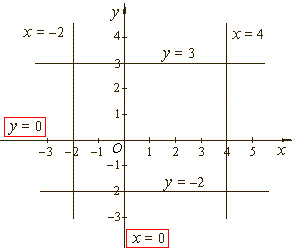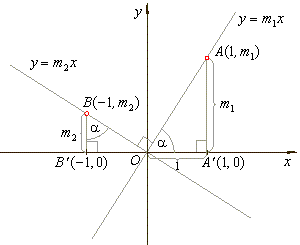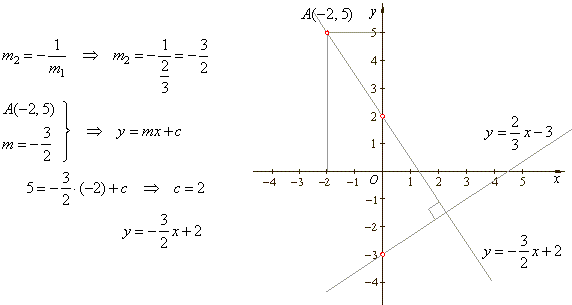|
| Graphing
Linear Equation, Linear Function (First Degree Polynomial)
|
|
|
|
 Lines
parallel to the axes, horizontal and vertical lines
Lines
parallel to the axes, horizontal and vertical lines
|
 The
point-slope form of a line
The
point-slope form of a line
|
 Parallel
and perpendicular lines
Parallel
and perpendicular lines
|
|
|
|
|
|
|
|
| Lines
parallel to the axes, horizontal and vertical lines
|
| If
m =
0, the function does not depend of
x. To every number
x
associated is the same constant value y =
c.
|
| A
line parallel to the x-axis
is called a horizontal line (or constant). |
| If
the x
value never changes a line is parallel to the y-axis.
A line parallel to the y-axis
is called a vertical line. |
|
 |
|
| The linear function changes the sign at the root or zero point. |
| Thus,
if |
m > 0, |
then |
f
(x)
<
0 |
for all |
 |
while
|
f
(x) > 0 |
for all |
 |
|
|
| That
is,
f
(x)
= mx
+ c,
m
> 0 is negative for all x
less than the root,
positive for all x
greater than the root, and at the root f
(x)
= 0. |
| If |
m < 0, |
then |
f
(x)
>
0 |
for all |
 |
while
|
f
(x)
< 0 |
for all |
 |
|
|
|
| The
point-slope form of a line
|
| The equation of the line
y
= mx
+ c
is defined by the slope m
and by one of its points P1(x1,
y1). |
| As
coordinates of the point P1
must
satisfy
the equation of the line, we calculate the y-intercept,
by
substituting them into the equation of the line, |
|
P1(x1,
y1)
=>
y
= mx
+ c |
|
y1
= mx1
+ c
or
c
= y1 -
mx1
|
| Therefore, the line that passes through the given point
P1(x1,
y1)
and given is its slope m, has the equation |
| |
y
= mx
+ y1 -
mx1 |
or |
y -
y1
= m(x
- x1) |
|
|
|
| Example:
Find the equation of the line that is parallel with the line
y
= - x
- 2 and passes through the point
P1( 2,
1) . |
|
|
|
| Parallel
and perpendicular lines
|
| Two lines having slopes
m1
and m2
are parallel if |
| |
m1
= m2 |
|
that is, if
they have the same slope. |
|
|
| To acquire the criteria when two lines,
y
= m1x
and y
= m2x
are
perpendicular or orthogonal we can use the principle of similar triangles,
OA'A
and OB'B in the picture. |
| Therefore, |
m1
: 1
= -1
: m2 |
=> |
 |
|
 |
|
|
|
| This relation will stay
unchanged if we translate the perpendicular lines, that is, when
lines |
|
y
= m1x
+ c1
and y
= m2x
+ c2
are written in the slope-intercept form. |
| Two lines are perpendicular if the slope of one line is the negative
reciprocal of the other. |
|
| Example:
Find the equation of the line that is perpendicular to the line |
 |
and passes through |
|
|
the point A(-2,
5). |
 |
|
|
|
|
|
|
|
|
|
|
|
| Beginning
Algebra Contents C |
|
|
 |
|
| Copyright
© 2004 - 2020, Nabla Ltd. All rights reserved. |